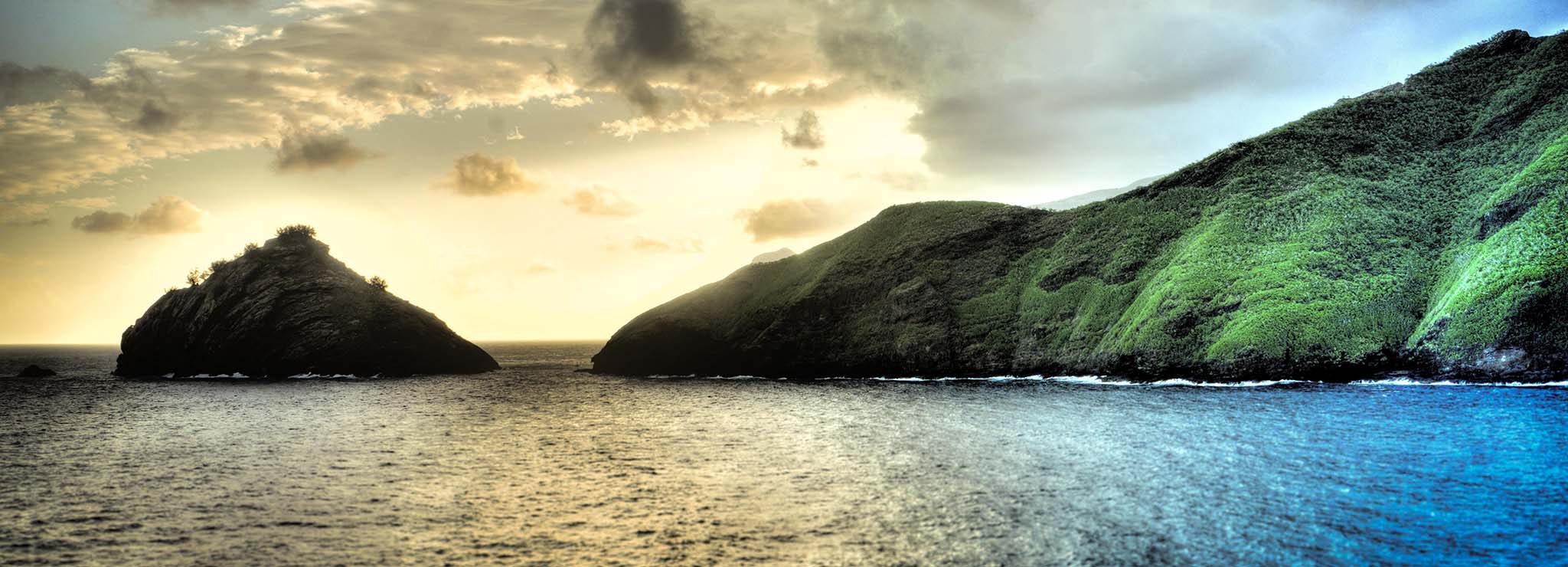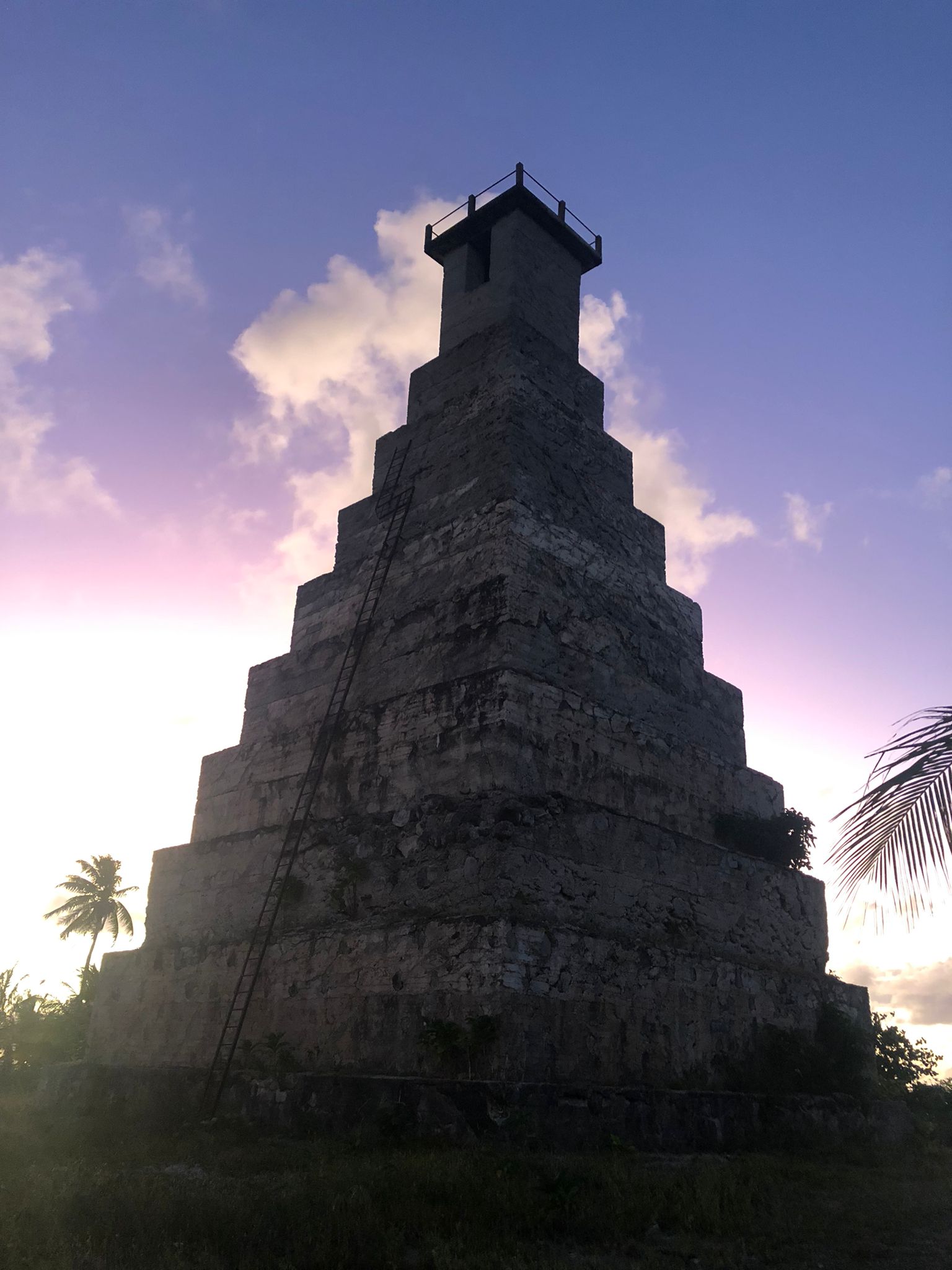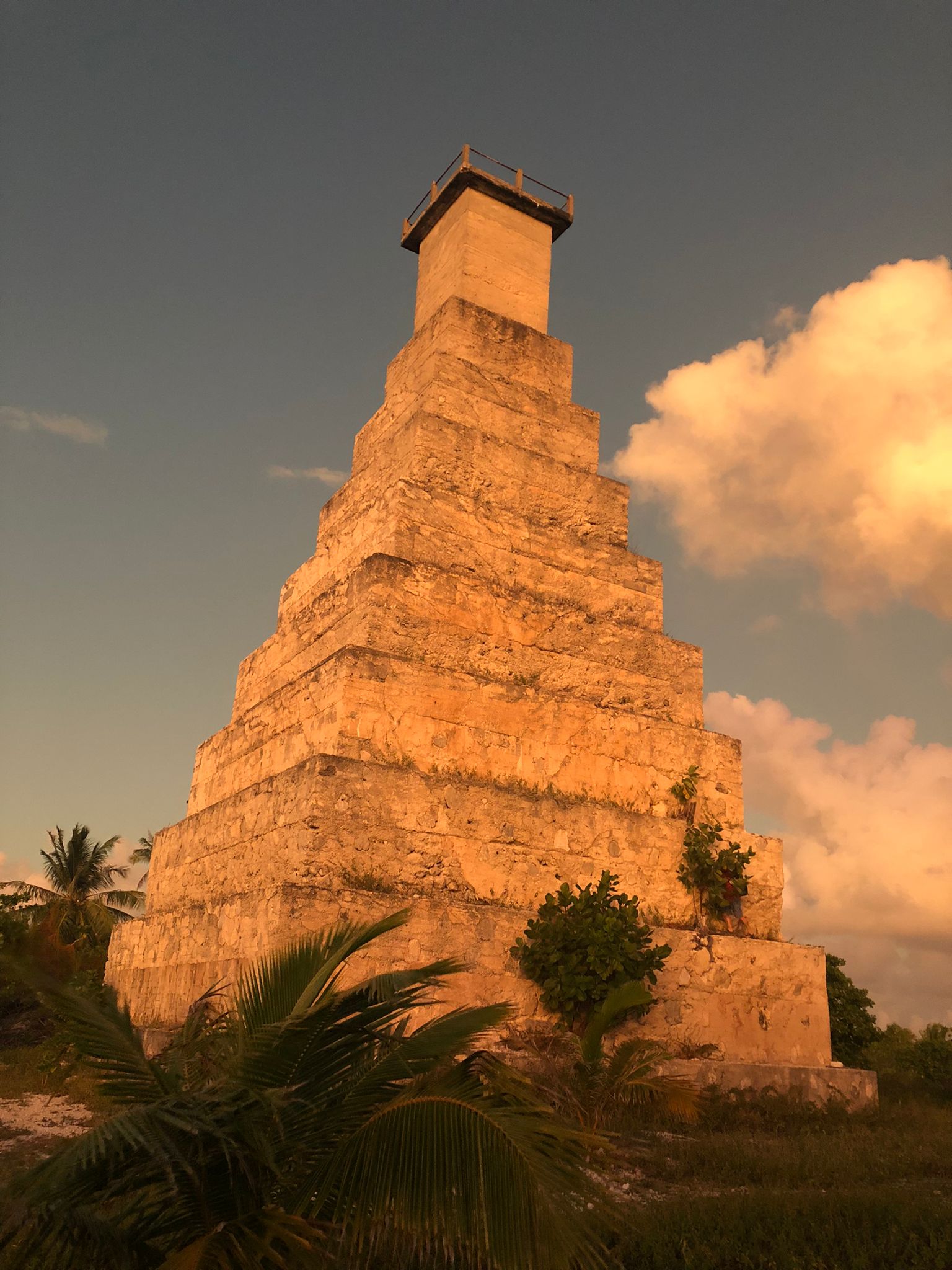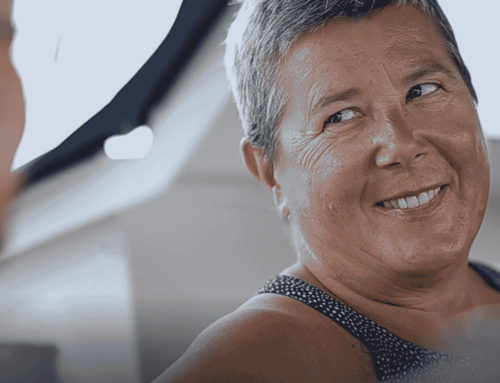After nearly 20 days at sea since leaving the Galápagos Islands, the sailboats taking part in the Grand Large Yachting World Odyssey 500 have reached the Marquesas Islands. Polyester catamarans and aluminum centreboarder monohulls alike called at this archipelago, one of the most eagerly awaited stopovers.
The aluminum centreboarders, Garcia Exploration 52 Blueway representing the Garcia Yachts shipyard, paid a visit to the Marquesas Islands, after their stopover at the Galápagos Islands reported previously. The Garcia Exploration 45 Salavida had sailed directly to the Marquesas archipelago from Ecuador. From there, shortly after passing through the Panama Canal, the Garcia had headed south to pick up the south-easterly trade winds, which in this area provide 18 to 20 knots of persistent wind sometimes interspersed with squalls. The crews thus completed a crossing of nearly 4,000 nautical miles to the Marquesas, mostly with downwind sails (gennaker or spinnaker, or even a boomed-out genoa), in one of the officially less frequented areas of the blue planet.
An archipelago with rich and diverse landscapes
Nuku Hiva, Ua Pou, Ua Huka, Tahuata, Fatu Hiva, Moho Tani … the names of the Marquesas Islands sound like a gentle melody to the ear. And yet this Polynesian archipelago made up of only 12 islands, 6 of which are inhabited, conveys a certain harshness. Its wild landscapes, its high terrain often exceeding 1,000 metres in altitude, its steep cliffs, or its coastal fringe marked by the absence of lagoons: everything in the Marquesas indicates that nature rules.
This is even more true when it comes to the archipelago’s phenomenal marine biodiversity, the development of which has benefited from the geographical isolation of the Marquesas. Manta rays, eagle rays, sharks, jacks, tuna, dolphins, swordfish … the marine fauna here is incredibly rich. The rally crews who experienced swimming among manta rays on the outskirts of Tahuata Island will certainly not deny this.
This abundance of nature goes hand in hand with the development of a rich and ancestral culture, naturally oriented towards the sea, which is very evident on what the Marquesans call ‘The Land of Men’.
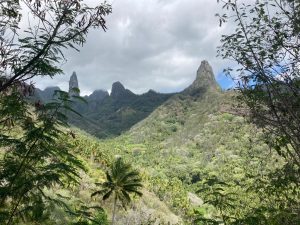
Settlement and colonisation
The Marquesas have been inhabited for about 2,000 years by settlers who arrived gradually from Melanesia and the Western Pacific. For a long time, it was believed these inhabitants came from the coasts of South America: this is what the Kon-Tiki expedition, led by Norwegian Thor Heyerdahl in 1948, sought to prove. But since then, science has clearly demonstrated that these populations were of Asian origin. They gradually came from the west aboard large pirogues that could sail against prevailing winds and currents. It was easy for those Neolithic explorers to turn around, pushed by the trade winds, if their exploration attempts failed. Carrying with them food and animals in order to survive the duration of a crossing into the unknown, these Southeast Asian tribes form the origin of Polynesian populations today.
The Marquesas Islands are located far from shipping lanes and were only discovered by Westerners in 1585 by the Spanish navigator Álvaro de Mendaña. Visited by James Cook on his second expedition in 1774, the archipelago remained sovereign-free until 1842, when it was annexed to France by rear-admiral Abel Dupetit-Thouars. This marked the arrival of many sailors, merchants, soldiers and missionaries, as well as convicts and other outcasts or deportees. In the 18th century, according to Captain Cook’s summary account, the Marquesas had a population approaching 100,000, which almost disappeared within a century due to epidemics, alcohol, and opium brought to the islands by Western and North American settlers. This population loss threatened the entire archipelago, to the point where it had only about 2,000 inhabitants at the end of the 19th century.
A vivid legendary past
The legend surrounding the creation of the archipelago states that the six inhabited islands form the outline of a house on the surface of the water: this design took the name of ‘God’s House’. According to this island tradition, the Marquesas form a coherent whole with a strong identity: the ‘Land of Men’.
This tenacious legend plays the role of a unifying rite, but did not prevent a history of conflict between people of the neighbouring valleys. The richness of the landscapes, but also the sculpture, the way of life, the traditions, the tales and the legends all contribute to making the Marquesas a land of great cultural and emotional value. These legends – in which birdsong, early-morning light, palm leaves and volcanic cliffs challenge the ocean – are the basis of a magnificent culture and contribute to the strong identity of the archipelago.
The importance of the Tiki statues, a central figure present everywhere in the archipelago, should be noted: the Tiki, or ‘First Man’ of the Polynesian world, is a deified ancestor who, nevertheless, is not a god. For the Marquesan people, Tiki art is therefore a true cultural manifesto as well as a source of memory. Hiva Oa is distinguished from its neighbours by the wealth of its various archaeological sites. In particular, it is home to ‘Takaii’, the largest Tiki in French Polynesia at 2.6 m high. This red stone statue with a smiling face symbolises balance, strength and beauty. Many petroglyphs and other lithic structures – most often the foundations of ancient community buildings – are also found on this island.
Easter at Nuku Hiva
Most of the rally participants arrived on the Marquesas at Nuku Hiva, the administrative centre in the north of the archipelago. Nuku Hiva is the largest of the islands, and also the most populated (with about one third of the total population of the archipelago, which is just over 9,000).
Easter-related ceremonies, which are very popular with the locals, gave the crews of the Grand Large Yachting World Odyssey 500 the opportunity to follow a mass in Marquesan, and to share a traditional meal of goat in coconut milk and fruit. In addition to this discovery of religious culture, the sailors were also able to take a pleasant hike through the magnificent landscapes of Nuku Hiva, both spectacular and preserved.
Prestigious visitors who fell in love with the Marquesas
Arriving in the Marquesas in June 1842, the American writer Herman Melville was barely 23 years old when he landed on the island of Nuku Hiva. He had abandoned the whaling ship that he had set sail on two years earlier. The captain of this ship had tyrannised the whole crew and was partly the inspiration for the terrible Ahab in Melville’s Moby Dick. The Taipi tribe, whose reputation for cannibalism was well established at the time, reserved a warm welcome for Melville. Melville set sail again a few weeks later. Not finished with his life of adventures and navigation, in 1846 he published ‘Typee’, the account of his time on the Marquesas Islands.
The Scottish writer Robert-Louis Stevenson, who visited the islands in 1888, more than 40 years after Melville, described a threatened paradise, where the people are disheartened and sacred places are rudely trodden. An archipelago in danger, in which the cultural divide between inhabitants on the one hand and missionaries and colonisers on the other is a source of incessant conflict. Like any navigator who comes into contact with these lands, Stevenson is nonetheless captivated by the beauty and atmosphere of the Marquesas Islands. It must be said that arriving by boat on the Marquesas is a shock: the smells, the mountains, the people who welcome you with kindness, the omnipresent Tiki sculptures, these are all powerful attractions, according to several accounts from the crews of the Grand Large Yachting World Odyssey 500.
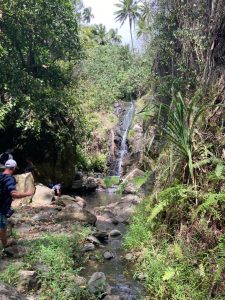
Hiva Oa, the Tiki Island dear to Paul Gauguin and Jacques Brel
The painter Paul Gauguin, who came to live on the Marquesas between September 1901 and his death in August 1903, contributed in his own way to the survival of the Marquesan traditions, by representing Tiki in several of his paintings. Gaugin settled on Hiva Oa with the Polynesian woman Vaeho, and, like Stevenson before him, was inspired by the archipelago. His paintings, with their shimmering colours and sensual forms, leave a visible mark in the history of art and in the identity of the archipelago. The French painter’s famous red tomb on the island of Hiva Oa is obviously one of the archipelago’s must-see sites.
After Paul Gauguin, the island of Hiva Oa received another distinguished guest when Jacques Brel came from Europe to isolate himself from the world and eventually died there. Sailing from Antwerp on a double-handed yacht with his partner, Jacques Brel announced shortly after his arrival in 1975, at the end of an eight-month cruise: ‘Finally we are staying here. The country is beautiful, the people pleasant, and thank God, they don’t know me!’
His perception of the islands is reflected in an emblematic song, ‘Les Marquises’. Surely the immense respect of the Marquesans for the ocean, expressed in the song, is a fitting manifesto for the crews of the Grand Large Yachting World Odyssey 500?
Sailing from island to island, with peace of mind
We should remind ourselves that the formula of this round the world rally allows the crews a great deal of freedom when it comes to choosing their route. They are free to choose certain stopovers and to skip others. Whatever the choice, they benefit from the security provided by the presence of their fellow sailors. All of this is done under the discreet supervision of the organisation, which, by means of effective location and communication tools, always knows where each of the sailboats is located.
These reassuring elements allow each crew a certain peace of mind about their program. The same goes for the stopovers as well as the long crossings, and everyone has been able to choose which island to disembark on, where to spend their time and how to enjoy the visit and reception from the inhabitants.
This peace of mind is shared by all participants of the Grand Large Yachting World Odyssey 500. They form a community of blue water cruising enthusiasts who have embarked on a three-year round the word voyage during which they experience total freedom, while knowing that they are always surrounded by ever more loyal friends.
In the meantime, the crews took part in a programme of visits and festivities, including a Marquesan brunch by the pool and a traditional dance performance. Everybody had previously visited the Gauguin Museum and paid their respects at the graves of the French painter and the Belgian singer.
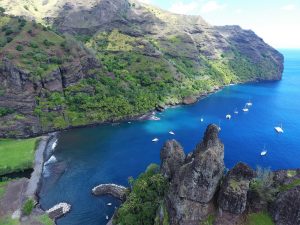
The ocean, an area of infinite freedom
After several weeks spent on the Marquesas Islands, immersed in a very tangible cultural environment, the crews have since set sail again in the direction of Tahiti. For some of them, this crossing includes a stopover in the lost atolls of the Palliser Islands, which are part of the Tuamotu archipelago. There, from Rangiroa to Fakarava, they will have plenty of time to rediscover nautical pleasures such as diving among the coral reefs, swimming in the company of black tip sharks or lazing around on the back deck of their centreboarders!
We will catch up with the Grand Large Yachting World Odyssey 500 crews once they have anchored in Tahitian waters. Until then, you can check their position on the rally website.
